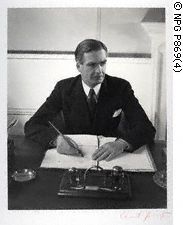EGYPT ON THE BRINK? PART TWO
"Egypt’s internal security forces are reportedly redeploying across the country Jan. 30 after abandoning the streets the previous day in a demonstration, showing what chaos would ensue should they be undermined by the military. As the protests show early signs of dwindling, Egyptian President Hosni Mubarak and Interior Minister Habib al-Adly, who have negotiated a stay in power so far, are likely betting that the protesters, who thus far have been unable to coalesce into a unified group, will clear the streets under pressure. However, serious potential for clashes remain, especially considering hostilities between the army and the police and between the police and protesters. The coming hours will thus tell whether Mubarak’s bet on the opposition was a wise one.
The decision to redeploy the internal security forces follows a major confrontation that has played out behind the scenes between the Interior Ministry and the military. The animosity between Egypt’s police and soldiers was amplified Jan. 28 when demonstrators overwhelmed the CSF and plainclothes police and the army stepped in to attempt to restore order.
Fearing that he and his forces were being sidelined, al-Adly was rumored to have ordered the police forces to stay home and leave it to the army to deal with the crisis. Meanwhile, multiple STRATFOR sources reported that many of the plainclothes policemen were involved in a number of the jailbreaks, robberies of major banks, and the spread of attacks and break-ins into high-class neighborhoods that occurred Jan. 29. In addition to allowing the police to blow off steam, the implicit message that the Interior Ministry was sending to the army through these actions was that the cost of undermining the internal security forces was a complete breakdown of law and order in the country that would in turn break the regime.
That message was apparently heard, and, according to STRATFOR sources, the Egyptian military and internal security forces have coordinated a crackdown for the hours ahead in an effort to clear the streets of the demonstrators. The interior minister has meanwhile negotiated his stay for the time being, in spite of widespread expectations that he, seen by many Egyptians as the source of police brutality in the country, would be one of the first ministers that would have to be sacked in order to quell the demonstrations. Instead, both Egyptian President Hosni Mubarak and al-Adly, the two main targets of ire for the demonstrators, seem to be betting that they can ride this crisis out and remain in power. So far, the military seems to be acquiescing to these decisions.
The real test for the opposition has thus arrived. In spite of a minor reshuffling of the Cabinet and the military reasserting its authority behind the scenes, Mubarak and al-Adly remain in power. The opposition is unified in its hatred against these individuals, yet divided on most everything else. The Muslim Brotherhood’s Islamist platform, for example, is very different from opposition figure Mohamed ElBaradei’s secularist campaign, which explains why no one has been able to assume leadership of the demonstrations. In evaluating the situation on the streets, the regime appears willing to take a gamble that the opposition will not cohere into a meaningful threat and that an iron fist will succeed in putting down this uprising.
Within the next few hours, police and military officials are expected to redeploy in large numbers across major cities, with the CSF taking the first line of defense. Tensions are still running high between the internal security forces and the military, which could lead to serious clashes between the army and police on the streets. The size and scope of the protests appear to be dwindling into the low thousands, though there is still potential for the demonstrations to swell again after protesters rest themselves and wake up to the same government they have been trying to remove. Moreover, as the events of Jan. 28 and 29 illustrated, protesters are far more likely to clash with the CSF than with the military".
"Egyptian Police Redeploying,"Stratfor, 30 January 2011, www.stratfor.com.
As per the above posting by the American intelligence outfit Stratfor, delivered at 22:40 GMT, the regime is basically following the scenario 'ii', which I outlined here yesterday. After allowing for twenty-four hours of chaos and looting on the streets (whether it was instigated directly by the Interior Ministry and the police is unknowable of course) of the country, it appears that the regime has decided (as per Stratfor) to redeploy in force on the street and one presumes use firearms without any restraint `a la what occurred during the food riots of 1977, when over eight hundred people were killed. Taking into account the increase in the population since, the contemporary equivalent would be close to 1,500 killed. The real issue is of course: will the firepower that the Interior Ministry forces & police have at their disposal be sufficient for the task (presuming that they use machine guns, the answer probably would be 'yes')? The second question, as highlighted by Stratfor is whether or not, if there are 'oceans of blood', will the army stand aside, and allow the 'job' to be done, or will its allegiance to its own hierarchy breakdown and will it then intervene? My own surmise (contrary to Stratfor's reliance of what occurred back in July 1952 with the 'Free Officers' Coup), is that the army will remain neutral and allow the dirty work to be done by the Interior Ministry troops and the police. Time will of course in the next twenty-four to forty-eight hours will tell all.











0 Comments:
Post a Comment
<< Home